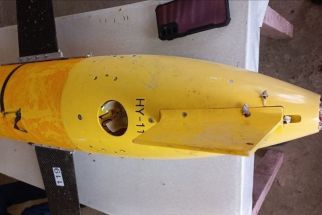DENR classifies additional 206 caves
MANILA, Philippines - The Department of Environment and Natural Resources (DENR) has classified 206 more caves, bringing to 364 the number of caverns considered as the nation’s natural wealth requiring sustainable management and conservation.
Environment Secretary Ramon Paje said the classification was pursuant to the National Caves and Cave Resources Management and Protection Act, which mandates the DENR to formulate, develop and implement a national program to conserve, protect and manage caves and cave resources.
“Classifying caves accordingly will thus help define which human activities are allowed within these areas so that we can preserve them in their pristine state or improve them if necessary,†Paje said.
Caves are classified into three classes. Class I caves are characterized by delicate and fragile geological formations, may be habitats of threatened species, provide archaeological value, and possess extremely hazardous conditions. As such, activities allowed in these caves are limited to mapping, photography, educational and scientific purposes.
The DENR Memorandum Circular 2014-03 identified 21 Class I caves, including the Masi Cave in Adams, Ilocos Norte; the Pagulayan Cave in the Peñablanca Protected Landscape in Cagayan; and the Santol Cave in the Island Garden City of Samal in Davao del Norte.
Class II caves have sensitive geologic values or high-quality ecosystems and portions with hazardous conditions. As such, they may be closed seasonally or permanently, or may be open only to experienced cavers or guided educational tours.
The famous Sohoton Cave in Samar Island Natural Park is one of 154 Class II caves identified in the DENR circular.
Class III caves are safe for guide-accompanied visitors as these caves do not contain known threatened species or geological or historical values. These caves may also be utilized when appropriate for economic purposes such as extraction of guano (bat waste) and collection of edible bird nests.
There are 30 Class III caves on the DENR’s list, including the Aglipay Cave 5 in Quirino Protected Landscape and the Mat-i Cave 2 in Baganga, Davao Oriental.
The newly classified caves are found in 11 regions, with Region 2 having the most number of caves at 101, followed by Region 11 with 30 caves.
Among the provinces, Cagayan has the most number of caves with 83, while Davao del Norte was a far second with 18 caves.
Upon classification, the DENR field offices oversee the preparation of a management plan on related ecotourism, scientific, educational and economic activities. The approved plan is implemented by the Protected Area Management Board for caves within protected areas or in coordination with the concerned local government unit and land owner for those outside protected areas.
- Latest
- Trending






























